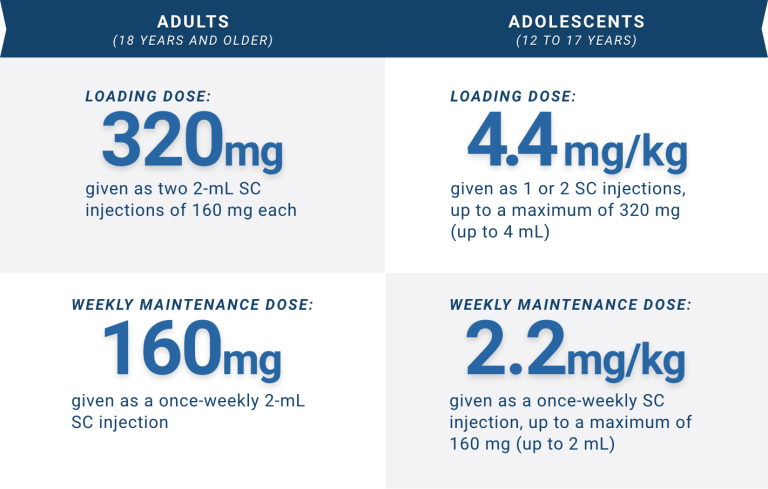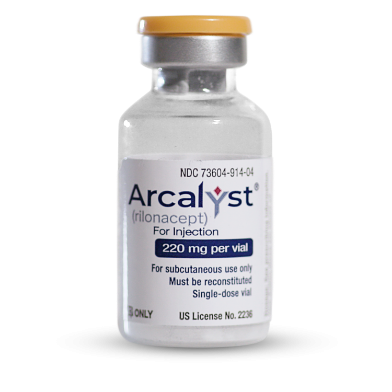ARCALYST® (rilonacept) IS A PATIENT-ADMINISTERED, ONCE-WEEKLY, SC INJECTION1
Dosing and Administration of ARCALYST1
The loading dose of ARCALYST should be performed under the supervision of a healthcare professional.


ARCALYST is supplied in sterile, single-use, 20-mL glass vials.
- Each vial contains 220 mg rilonacept, a sterile, white to off-white, lyophilized powder
- Reconstitution with 2.3 mL of preservative-free Sterile Water for Injection is required prior to subcutaneous administration of the drug
- The reconstituted ARCALYST is a viscous, clear, colorless to pale yellow, preservative-free, 80-mg/mL solution, free from particulates
How to use resources
Reference: 1. Data on file. Kiniksa Pharmaceuticals.
